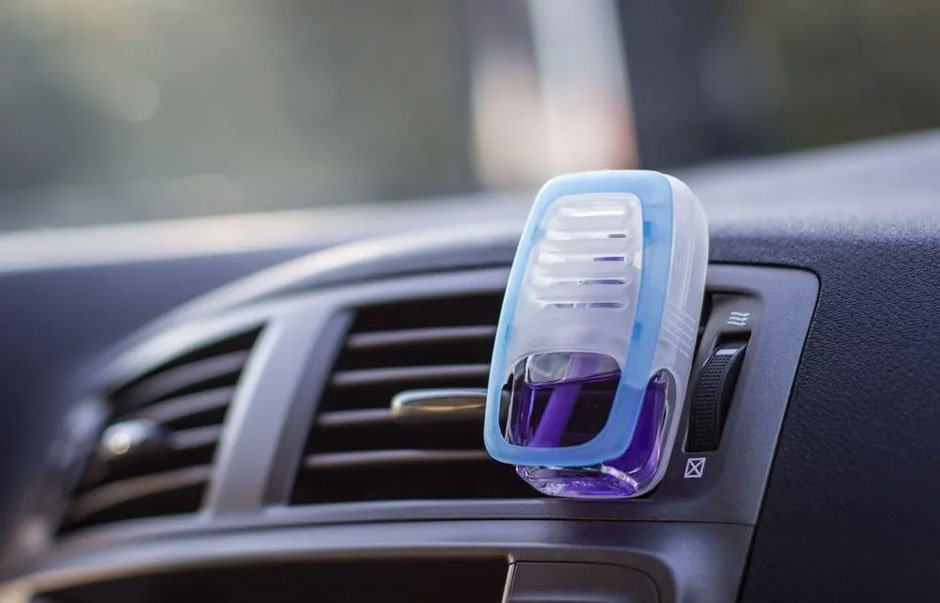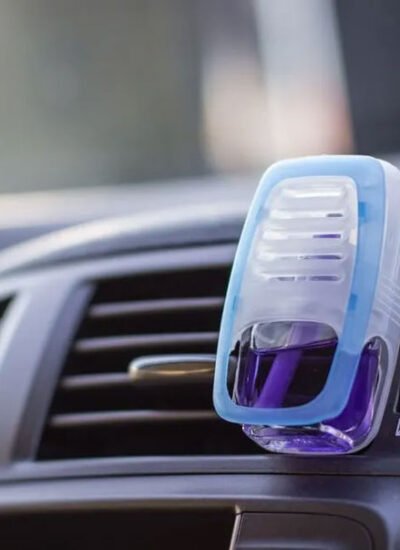 If you spend as much time driving as a typical American, you’re on the road for about an hour every day. If you’re going to spend hundreds of hours in your car every year, you’d better enjoy the experience – and the way your car smells will have a huge impact on that.
If you spend as much time driving as a typical American, you’re on the road for about an hour every day. If you’re going to spend hundreds of hours in your car every year, you’d better enjoy the experience – and the way your car smells will have a huge impact on that.
Whether you want to make your car smell better for your own benefit – or you’re about to sell it and want to get as much money as you can – this is the guide for you. You’re about to learn how to get bad smells out of your car quickly and affordably.
Stop Doing the Things That Make Your Car Smell Bad
Before you can even begin to think about making your car smell better, you need to stop doing the things that make it smell bad in the first place. Here are some important pointers to keep in mind.
- Don’t ever smoke in your car. If you’re a nicotine user, switch to a smoke-free option like Coastal Clouds vape juice
- Try to avoid eating in your car. If you’re the type of person who takes lunch breaks in your vehicle, old burger wrappers and French fry crumbs are going to become major sources of bad smells – and no matter how careful you are, bits of food will always find their way into the cracks between your seats.
- Clean and vacuum your car regularly. It’s worth the effort to find a local gas station with a vacuum that’s free to use.
- Always take your trash with you when you leave the car. Even something as seemingly harmless as a half-finished drink can start to smell pretty bad if you leave it in the cup holder for a few days.
Clean Your Car Thoroughly
Once you’ve ensured that you’re not doing anything that could contribute to your car smelling bad, it’s time to give it a top-to-bottom cleaning.
- Wash the car’s exterior.
- Check around the hood, trunk and engine compartment for dead leaves and twigs that could block drainage and contribute to mold growth.
- Search the car’s interior for trash and throw it away.
- Vacuum the car Make sure to vacuum the areas that you usually skip when you’re giving your car a quick cleaning, such as under the seats and between the seat bottoms and backs. Vacuum under the floormats as well.
- If your car has fabric upholstery, clean it with an auto upholstery cleaner and a soft brush. If your car has leather seats, clean them with a leather cleaning compound and a cloth.
- If you have an older vehicle, you might find it helpful to use an air freshener. Since you don’t really want to inhale chemicals for an hour every day, try to find an air freshener that’s based on essential oils.
Replace the Cabin Air Filter
After you’ve finished giving your car a thorough cleaning, the next step is to remove and replace the cabin air filter. The filter cleans the air as it recirculates through the vehicle, and that means it’s likely to harbor unpleasant smells after you’ve been using it for a year or so.
You can get a new cabin air filter installed at any garage or oil-change facility, but it’ll cost around $50. You can save a lot of money by buying your own filter for about $20 and installing it yourself. This is something that you can almost definitely do yourself, even if you’re not mechanically inclined.
The location of the cabin air filter varies between car models, and you can find it in your vehicle’s instruction manual. It’s often behind the glove box. To access it, you’ll need to remove a plastic retainer, which will allow the glove box to open fully. You’ll find the filter housing behind the glove box, and all that you need to do is remove the old filter and install the new one with the arrow facing the same direction.
Check for Sources of Water Entry
If you’ve noticed a persistent moldy or musty smell in your vehicle – particularly after rain – you’ll need to do a bit more troubleshooting to remove the smell permanently because water is probably getting inside your car. Here’s what you need to do.
- Check the weather sealing around your moonroof or sunroof.
- Check the weather stripping around your windows and around the outside of your trunk.
- Check your car’s floor for wet spots after a rainy day. If you find one, it’s likely that one of the water drainage channels is blocked.
Almost every car that exists has at least one owner’s forum somewhere online, and a forum can be a great resource when you’re trying to troubleshoot a problem. You’ll most likely be able to find out which drainage channel is blocked based on where the water is ending up.
Use an Ozone Generator for Tough Smells
Suppose you’ve done everything in this article, and you still find that the unpleasant smells aren’t completely gone. What can you do next? The best solution in this case is to seek out a local auto detailer or mold remediation company that has an ozone generator available and either borrow it or ask them to run it in your car.
Ozone is a dangerous substance, which means that ozone generators must be handled with extreme care. Ozone can neutralize almost any foul odor, though, which makes it a great last resort if you’re having trouble dealing with a persistent smell and want to get rid of it.
Why does ozone work so well for getting rid of bad smells? It all comes down to chemistry. Ozone is basically oxygen with three atoms instead of two. The third oxygen atom is unstable, and it wants to break off and attach to other molecules. When that happens, the molecule to which the oxygen atom has attached is now a new substance and no longer has the identifying smell of the old substance. It’s that simple. Ozone is effective for removing almost any unwanted odor.





Leave a Reply